Design Master HVAC has three commands that you can use to set the CFM total for a set of diffusers.
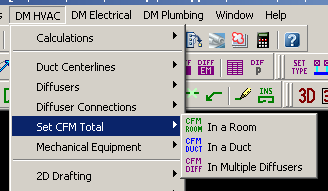
In Multiple Diffusers: The simplest of the three sets the CFM total for multiple diffusers that you select. The current CFM total is displayed and you provide the new total.
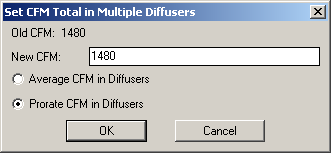
There are two options provided for distributing the additional CFM among the selected diffusers:
- Average: With this option, the new CFM value is divided by the total number of diffusers and is evenly distributed to them. The CFM value for the individual diffusers are rounded up to the nearest 5 CFM.
- Prorate: With this option, the relative CFM ratios between the selected diffusers is maintained using the new CFM value. For example, consider two diffusers, one with 100 CFM and the other with 200 CFM. If you increase the total from 300 CFM to 600 CFM, the first diffuser will have 200 CFM and the second will have 400 CFM.
In a Duct: This command allows you to set the total CFM in a duct. When you select a duct, you are presented with the airflow of all the diffusers connected to that duct. For example, if you wanted to set the airflow for this supply system, you could use this command and select the supply duct on the right.
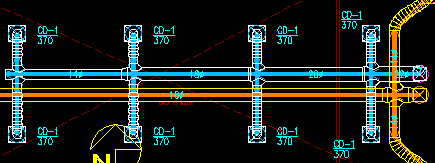
The dialog box used for setting the CFM has the same options as the In Multiple Diffusers command. The differences between the two is how the diffusers the change applies to are selected.
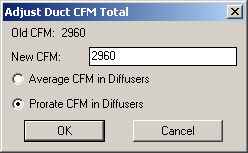
In a Room: Setting the CFM in a room integrates the building load calculations with the duct design. The dialog box for this command has more options than the other two.
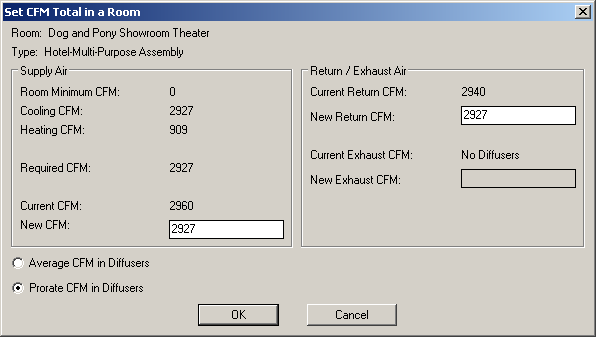
You have the option to set the supply CFM, return CFM, and exhaust CFM. The supply CFM requirements that are calculated based upon the building loads are displayed. The new CFM defaults to the required CFM value, but can be changed as necessary.
If there are exhaust diffusers, you can specify the exhaust CFM for the room. The exhaust CFM defaults to the current value of the diffusers. The return CFM defaults to being the difference between the required supply CFM and exhaust CFM. If there are no exhaust diffusers, the default return CFM will match the default supply CFM.
